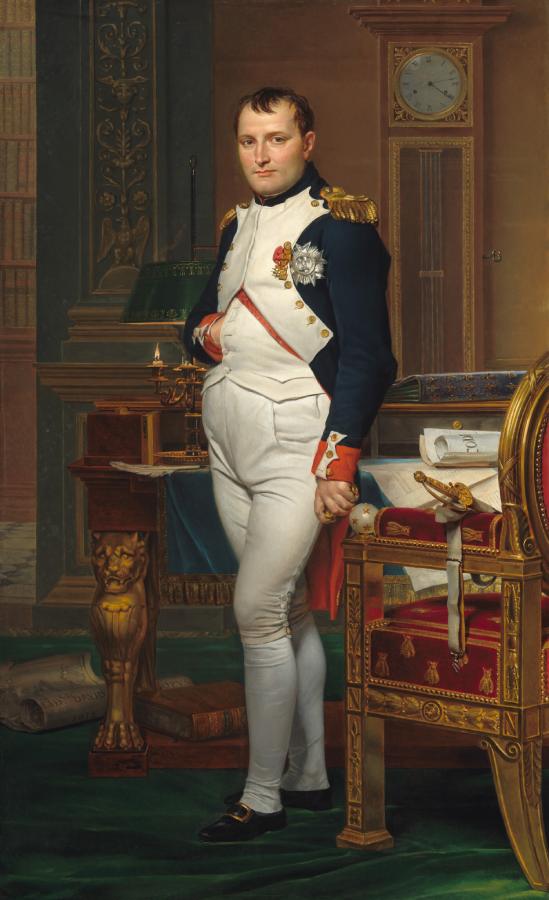David, Jacques-Louis (1748-1825)
L’empereur Napoléon dans son cabinet aux Tuileries (The Emperor Napoleon in His Study at the Tuileries)
1812
Oil on canvas, 203.9 × 125.1 cm
National Gallery of Art, Washington
How do portraits influence the way we see historic figures? David shows Napoleon Bonaparte working tirelessly for the people of France. The clock reads 4:13, the early morning. The candles are almost extinguished. The emperor’s hair is disheveled, his stocking rumpled. He has spent the night drafting the Napoleonic Code, France’s first civil law code. David’s portrait creates a powerful myth of the leader, but it’s not the full story. Napoleon was a military genius whose code became the model of modern legal systems worldwide, but he also left millions dead in his quest to conquer Europe. He reestablished slavery in France’s colonies and stole art from around the globe. His complex legacy is still the subject of fierce debate. A man with pale peach skin and dark hair wears a military uniform and stands in front of a desk in this vertical portrait painting. He nearly fills the composition so seems close to us, and he looks directly at us. His body is angled slightly to our left and he tucks his right hand, on our left, flat against his chest between the buttons of his jacket. His navy-blue waistcoat is white along the front where it is fastened with brass buttons along his chest. The jacket has red cuffs, gold epaulets on the shoulders, and three medals affixed to the chest. White britches end just below the knee, and white stockings covering his calves are wrinkled at the ankle above black shoes with brass buckles. A candle burns low in a lamp on an ornately carved and gilded desk behind the man. Books and papers are piled on the desk to our right. More papers and a thin sword rest on a chair in front of the desk to our right. The chair is also carved and gilded, and is upholstered with scarlet-red fabric decorated with gold bees. The legs of the chair push back the forest-green carpet underfoot. A tall clock stands on the wall opposite us and reads 4:13. A few capital letters are written on a scroll of paper on the chair, “COD.” The artist’s name is also written as if printed on a scroll of paper on the floor behind the desk to our left: “LVD.CI.DAVID OPVS 1812.” (NGA)
See also:
• Napoléon I (1769-1821) | Paris (France)
